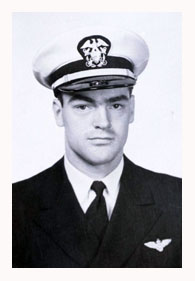
Ensign Edward L. Scharch
Mar. 14, 1944, Class 10D |
|
Ed Scharch reported October 26, 1943 to U.S.
Naval Air Training Center (NATC) in Pensacola,
Florida for Intermediate flight training. He spent
many hours of flight time in the cockpit of an SNJ,
one of the U.S. Navy's tandem seat trainers, which
had full
instruments and retractable landing gear. On March 14, 1944,
after successfully completing "Intermediate" training,
he was commissioned an Ensign
and accepted his wings as A-V(N) Naval
Aviator, USNR.
Having received a Naval Aviator diploma, commission and
wings,
pilots were assigned to squadrons then sent off to an Operational Training Unit (OTU). Carrier
pilots had an additional training hurdle with Carrier
Qualification which took place aboard a "floating airfield."
Graduates were sent to the Carrier Qualification Training
Unit at NAS Glenview, Illinois.
|
|
|
Intermediate Flight Training Program
|
|
 This was the second of three
flight training stages
for would-be Naval Aviators during WWII. The duration of the Intermediate flight training
phase was about 14-18
weeks and included some 160 hours of flight time. This was the second of three
flight training stages
for would-be Naval Aviators during WWII. The duration of the Intermediate flight training
phase was about 14-18
weeks and included some 160 hours of flight time.
Upon successful completion of his primary training, the
AvCad moved on to Intermediate Flight Training. This
training was usually conducted at naval air training centers
such as NAS Corpus Christi or NAS Pensacola. In his
intermediate training the AvCad flew service type aircraft
(types in squadron service as opposed to training aircraft).
Students were given the opportunity to request the type of
aircraft in which they wanted to specialize. These types
generalized as carrier (CV), patrol (VPB), utility (VJ/VR)
or scout/observation (VO/VCS), although there was no
guarantee that one would be assigned as requested.
Initial intermediate training consisted of a refresh of
skills taught in Primary Training in order to indoctrinate
the AvCad in the operation of heavier, more powerful
aircraft. Instrument training was heavily emphasized with
the use of Link trainers and “under-the-hood” flying. The
instrument flying program began with basic familiarization
with instruments and their part in trimming; straight,
smooth flight; climbs, glides, spirals, stalls and spins;
intricate patterns; recovery from unusual situations; and
rough air procedures. This phase also covered radio ranging,
beam navigation, and methods of orientation. The
satisfactory check for this phase included demonstration of
primary skills, instrument flight and navigation, and
instrument guided landing.
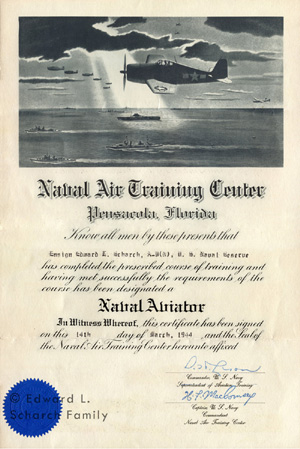 |
|
Ensign, Edward L. Scharch, A-V(N), U.S.N.R.,
graduated Intermediate flight training at NATC
Pensacola on March 14, 1944. He received this Naval
Aviator diploma along with commission as an officer. |
The next phase of intermediate training was Specialized
Intermediate Training based on the AvCads' by now expected
community assignment and centered on specific operational
types.
The VPB training was 90 hours and included six elements:
seaplane and multi-engine land plane familiarization,
instruments, navigation, formation, bombing, gunnery, and
night operations familiarization.
The VO/VCS training was also 90 hours and included
floatplane familiarization in primary and operational types,
formation flying, navigation, communications, and gunnery.
Emphasis was given to water seamanship, gunnery and dive
bombing.
VF training was 100 hours and included familiarization,
acrobatics, formation tactics, primary and advanced fixed
gunnery, combat tactics, glide bombing, navigation, night
flying and carrier operations.
VSB training was 100 hours including
familiarization, gunnery, as well as carrier operations and
with the greatest emphasis placed on glide and dive bombing,
navigation, scouting, communications and formation tactics.
VT training was similar to VSB with the elements of
the torpedo attack being the emphasis vice dive bombing.
Intermediate ground school subjects included engineering
and maintenance, navigation, communications, aerology,
self-preservation and organization and operations of
squadrons.
At the completion of Intermediate Flight Training the
Aviation Cadet was awarded his wings, as assigned a
permanent Naval Aviator number and, except for a very small
number of NAPs, was commissioned in the Navy, Marine Corps,
or Coast Guard.
|
|
About the NAS Pensacola
|
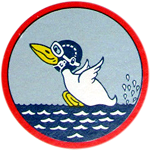 |
|
NAS insignia WWII-period |
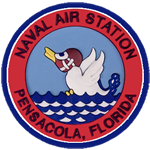
|
| NAS insignia
(official) |
| |
Known
as the "Cradle of Naval Aviation," Naval Air Station,
Pensacola, Florida is where most Navy and Marine Corps
aviators, past and present, began their flight training.
Tens of thousands of naval aviators have been trained there,
including astronauts Alan Shepard and Neil Armstrong. It is
the home of the world renowned Blue Angels flight
demonstration squadron.
In October of 1913, Secretary of the Navy Josephus
Daniels appointed a board that recommended the establishment
of an aviation training station in Pensacola, making NAS
Pensacola the first naval air station commissioned by the
Navy.
When America entered WWI, NAS Pensacola, still the only
naval air station in the country, had 38 aviators, 163
enlisted men trained in aviation support, and approximately
50-55 fixed-wing aircraft. Two years later, NAS had grown
exponentially with 438 officers and 5,538 enlisted men, and
had trained 1,000 naval aviators. At the end of the war,
aviation training slowed almost to a crawl, largely as a
result of the Great Depression and post WWI military
cutbacks. It was so slow in fact, that only 100 pilots on
average were graduating each year.
In the mid-1930s, the establishment of the aviation cadet
program caused rapid growth. When Pensacola’s training
facilities could no longer accommodate the ever increasing
number of cadets accepted by the Navy, two more naval air
stations were created - one in Jacksonville, Florida, and
the other in Corpus Christi, Texas.
The air station grew into an air training center. During WWII, training at
NATC Pensacola increased
dramatically, reaching its peak in 1944, with 12,000 men
completing almost 2 million hours of flight school in that
year alone. Those numbers dropped significantly after the
war, but experienced a bump during the Korean war.
During the early 1950s, the Navy was in transition. The
old propeller type aircraft were being replaced by the much
faster and technologically advanced jets which required NAS
Pensacola to revise training techniques and courses.
|
|
NHHC. (2014). NAS Pensacola Celebrates
100 Years of Naval Training Excellence. Retrieved from
http://www.navalhistory.org/2014/01/20/nas-pensacola-celebrates-100-years-of-naval-training-excellence
|
Naval Auxiliary Air Stations and Outlying Landing Fields
|
|
When the U.S. entered into World War II, primary flight
training at NAS Pensacola's Chevalier Field increased in
pace from 800 to 2,500 students per month. NAS Pensacola
continued to gain additional outlying fields during the
period.
Several of these airfields were greatly expanded and
designated as Naval Auxiliary Air Stations. Primary flight
training at Pensacola's Chevalier Field ended in 1943, and it became
headquarters of the Naval Air Intermediate Training Command.
During the 1940s, the naval air training center commanded
several auxiliary air stations and over
thirty outlying landing fields. The following information
focuses on a period between October 1943 and March 1944,
when Ed Scharch was receiving Intermediate flight training at
NATC Pensacola.
|
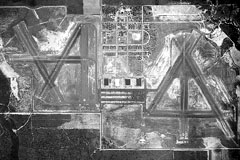 |
NAAS Barin Field - Foley, AL. Barin Field was
the only NAAS in Alabama, and it operated under the jurisdiction of NATC
Pensacola. In 1942, the Navy leased the Foley Municipal Airport
and also purchased adjoining land to
construct a second airfield. Training at Barin Field first consisted of torpedo bomber
& fighter instruction. Other
aircraft used included OS2U Kingfishers, SNVs, and
N2S Stearmans. Barin Field had become an autonomous
auxiliary station by 1943, with two complete sets of
asphalt runways (east and west) separated by four
large hangars, maintenance shops, barracks and
administration buildings. Torpedo training moved to Corry Field, leaving Barin to
focus on the fighter program using SNJ trainers.
Before the end of the war, more than 400 training
aircraft were based at NAAS Barin Field.
|
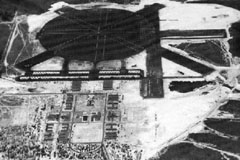 |
NAAS Bronson Field - Myrtle Grove, FL.
Located 9 miles west of NAS Pensacola. Originally called
Tarkiln Field and located northwest of Pensacola, it was
established in 1939 as an outlying field to Corry Field. In
1942, a seaplane facility was added on the eastern shore of Perdido
Bay. Both installations were designated a NAAS in late 1942,
and it provided runways for landplanes and
seaplane ramps for floatplanes. Training squadron VN-5
operated nearly 300 SNJs from Bronson Field, while squadron
VN-8 operated some 40 PBY Catalina flying boats at the seaplane
ramp.
|
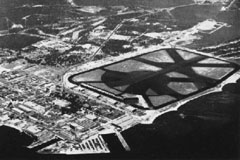 |
NAAS Chevalier Field - NAS Pensacola,
FL. The training center's main airfield was built in 1922
and called Station Field. It was renamed Chevalier Field in 1935
and further expanded in 1938 to include schools
for aviation medicine and aviation maintenance. The airfield had seven asphalt runways arranged in two
clusters that intersected at mid-field, with the longest at 3,100
feet. an extensive seaplane ramp and hangars were also added on the southeast
corner facing Pensacola Bay. Variety of
aircraft based here were the OS2U, SC & N3N floatplanes
and PBY
seaplanes, along with N3N, N2S, SNV and SNJ landplanes.
|
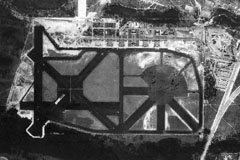 |
NAAS Corry Field - Myrtle Grove, FL. The
first auxiliary field established for the NAS. A newer Corry
Field was built in 1927, west of downtown Pensacola. an
active aviation training complex where advanced fighter
plane techniques were taught. In 1942 the NAS Pensacola
Transport Unit, flying PBYs, R4Ds and SNBs, was based at
Corry. In January 1943, Corry Field was
designated a NAAS. Squadron 8C conducted multi-engine patrol
or VB-2 training in SNBs until moving in November 1943 to
Whiting Field. Squadron 6 joined the unit in August 1943 and
conducted carrier aircraft VTB (torpedo bombing) training
initially in land-based OS2Us (and later SNJs) until the end
of 1944. In the mid-1960s, for a time, Corry Field became a venue
for sports car racing. An old track map shows the road
course was laid out on existing runways, and it included
some ten or more turns.
|
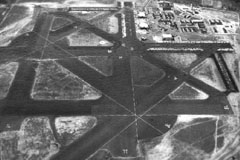 |
NAAS Ellyson Field - Ferry Pass, FL.
The airfield was first proposed
in 1940 as an outlying landing field to support NAS flight
training. "Site 3" was
12 miles north of NAS Pensacola. Construction began in 1941,
but it was greatly expanded as the war intensified and cost
more than
$1.7 million. Ellyson Field OLF opened October 1, 1941, with six taxiways & runways, three hangars,
administrative & operations buildings, barracks & mess
hall. In 1943, the OLF was redesignated a Naval Auxiliary
Air Station. Ellyson's only training squadron was VN-2A, and
it conducted intermediate basic training until it was
disestablished in 1945. The Vultee SNV 'Valiant'
single-engine monoplane trainer
was used for familiarization, formation & night flying. At
its peak, the squadron operated almost 250 SNVs and conducted 4 weeks
and 36 hours of flight training before the cadets, enlisted
& officer students moved on to specialized intermediate
courses with SNJ, PBY, SNB & OS2U aircraft.
|
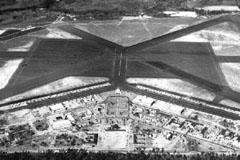 |
NAAS Saufley Field - Bellview, FL.
Initially built in 1933, Felton's Field was 9 miles
northwest of NAS Pensacola. The OLF was significantly expanded and
renamed Saufley Field in 1940. It conducted
primary training, instrument training, and fighter training.
On February 15, 1943, Training Squadron Three Detachment 8-B
(VN3D8-B) was organized at Saufley Field, but was relocated
to Whiting Field on July 1, 1943. Saufley was commissioned a NAAS
in 1943, and it provided
a variety of training in N2S, PBY5A, SBD and SNJ aircraft. The
airfield had a large rectangular asphalt mat at its center,
over which four asphalt runways extended. The control tower
and four hangars were situated on
the south end. In 1944, there were 160 aircraft at Saufley and
a station complement of over 2,200 men. The station also had several of its own
OLFs during WWII, and it remained open after the war due to
its substantial construction.
|
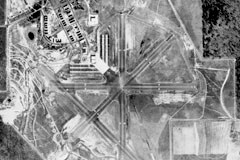 |
NAAS Whiting Field - Milton, FL. Opened
July 16, 1943 as an auxiliary air station to NAS Pensacola,
located 28 miles northeast of the NAS. The
new aviators first took up residence in tents. The airfield
was built on
2,920 acres of agriculture land, and its complement grew
to 3,300 officers and men and 1,431 students. Training
Squadron Three Detachment 8-B (VN3D8-B) was relocated from
Saufley to Whiting Field on July 1, 1943 and later joined by
VN3D8-A from Chevalier Field to form VN-3. Training aircraft
used were SNBs, SNJs, and PBYs. WAVES
operated Link Trainers (flight simulators) while
on the ground. Outlying fields to Whiting included
Choctaw, Holley, Milton 'T', and Pensacola Airports. German
POWs arrived
at Whiting in July 1945 for duty in construction and
soil erosion projects. The 225 detainees were released in March 1946.
VN-3 squadron was decommissioned in 1947.
|
|
NATC Pensacola's Auxiliary Stations and Landing Fields
|
| Des. |
|
Name |
|
Town/City |
|
Note |
| NAS |
|
Pensacola (Chevalier Field) |
|
Pensacola |
|
aka Chevalier Field |
| |
|
Pensacola SPB |
|
Pensacola |
|
Part of NAS Pensacola as seaplane facility |
| NAAS |
|
Barin Field |
|
Foley, AL |
|
Aux to Pensacola NAS |
| NAAS |
|
Bronson Field |
|
Pensacola |
|
Aux to NAS Pensacola-Chevalier Field (aka Tarkiln Field) |
| |
|
Bronson Field SPB |
|
Pensacola |
|
Part of NAAS Bronson as seaplane facility |
| NAAS |
|
Corry Field |
|
Myrtle Gove |
|
Aux to NAS Pensacola |
| NAAS |
|
Ellyson Field |
|
Pensacola-Ferry Pass |
|
Aux to Pensacola-Chevalier NAS |
| NAAS |
|
Saufley Field |
|
Bellview |
|
Aux to Pensacola-Chevalier NAS; started as an OLF. |
| NAAS |
|
Whiting (North Field) |
|
Milton |
|
Aux to Pensacola NAS |
| NAAS |
|
Whiting (South Field) |
|
Milton |
|
Aux to Pensacola NAS |
| OLF |
|
Bagdad Field |
|
Milton-Bagdad |
|
OLF to Pensacola flight training. OLF to NAAS Ellyson Field |
| OLF |
|
Bauer Field |
|
Pensacola |
|
OLF to NAS Pensacola |
| OLF |
|
Bayou Field |
|
Pensacola-Warrington |
|
OLF to NAS Pensacola |
| OLF |
|
Bells Field |
|
Pensacola-Brent |
|
OLF to Pensacola |
| OLF |
|
Choctaw Field |
|
Milton |
|
OLF to NAAS Whiting Field |
| OLF |
|
Clay Pits Field |
|
Pensacola-Brent |
|
OLF to Pensacola NAS |
| OLF |
|
Crestview Field |
|
Crestview |
|
CAA Intermediate Site (No 21) and OLF to NAS Pensacola |
| OLF |
|
Fountain Head Field |
|
Seminole |
|
OLF to Pensacola NAS |
| OLF |
|
German's Field |
|
Pensacola |
|
OLF to Pensacola NAS |
| OLF |
|
Gonzalez Field |
|
Cantonment |
|
OLF to NAS Pensacola |
| OLF |
|
Helm Field |
|
Seminole |
|
OLF to NAAS Saufley Field |
| OLF |
|
Holley Field |
|
Holley |
|
OLF to NAAS Whiting Field; aka Navarre OLF. |
| OLF |
|
King’s Field |
|
Muscogee |
|
OLF to NAS Pensacola |
| OLF |
|
Lyons Field |
|
Molin-Quintette |
|
OLF to NAS Pensacola |
| OLF |
|
Milton T Field |
|
Milton |
|
OLF to NAAS Whiting Field; existing airport
before war used by Navy. |
| OLF |
|
Pace Field |
|
Pace-Molino-Wallace |
|
OLF to NAS Pensacola; now used for helicopter training |
| OLF |
|
Pensacola Field/Pensacola
Municipal Airport) |
|
Pensacola |
|
OLF to NAAS Whiting Field; Joint usage with civilian
operations. |
| OLF |
|
Santa Rosa Field
(aka Milton Field) |
|
Milton |
|
OLF to Whiting |
| OLF |
|
Section One Field |
|
Seminole |
|
aka Pensacola No. 1; OLF to NAAS Saufley Field |
| OLF |
|
Site 4-A Field |
|
Ensley |
|
OLF to NAS Pensacola |
| OLF |
|
Site 5 Field |
|
Ensley |
|
aka Pensacola OLF No 5; OLF to NAAS Saufley Field |
| OLF |
|
Site 6 Field |
|
Ensley |
|
OLF to NAAS Saufley Field; aka Kings OLF; aka Pensacola OLF No.6 |
| OLF |
|
Site 7 Field |
|
Pensacola-Bellview |
|
OLF to NAAS Saufley Field |
| OLF |
|
Site 8-A Field |
|
Pensacola-Muscogee |
|
aka Pensacola No. 8A; OLF to NAAS Corry Field |
| OLF |
|
Site 9 Field |
|
Muscogee |
|
OLF to NAAS Saufley Field; aka “K” Field – not to be confused with King’s Field to the Northwest; aka Pensacola OLF No 9 |
| OLF |
|
Spencer Field |
|
Pensacola-Pace |
|
OLF to NAAS Ellyson Field |
| OLF |
|
Stump Field |
|
Pensacola-Brent |
|
OLF to NAS Pensacola |
| OLF |
|
V Field |
|
Pensacola |
|
OLF to NAS Pensacola |
| OLF |
|
X Field |
|
Pensacola |
|
OLF to NAS Pensacola |
| OLF |
|
Y Field |
|
Pensacola |
|
OLF to NAS Pensacola |
| OLF |
|
Z Field |
|
Pensacola |
|
OLF to Pensacola NAS |
|
U.S. Naval Activities at NATC Pensacola during WWII
|
|
U.S. Naval Activities during World War II. Department of the Navy, Washington DC, 1945. The original is an unpublished, type-written manuscript
provided by the U.S. Naval Historical Center.
|
| 1. |
Naval Air Station |
| 2. |
Naval Barin Auxiliary Air Station |
| 3. |
Auxiliary Air Station, Bronson Field, Naval Air Training Center |
| 4. |
Clothing & Small Stores, NAS |
| 5. |
Naval Hospital |
| 6. |
Ship's Store Ashore, NAS |
| 7. |
Auxiliary Air Station, Saufley Field |
| 8. |
Naval Training School (Photography), NAS |
| 9. |
Aerial Free Gunnery Instructions School, NAS |
| 10. |
Naval Auxiliary Air Station, Whiting Field |
| 11. |
Aviation Free Gunnery Central Standardization Committee |
| 12. |
Naval Auxiliary Air Station, Barin Field |
| 13. |
Link Celestial Navigation Training Unit, NAS (46498) |
| 14. |
Assistant Supervisor of Shipbuilding, Pensacola Shipyards & Engineering Corp (43475) |
| 15. |
Naval Training School (Fixed Gunnery Device Operators Naval Air Training Center |
| 16. |
Naval Air Training Command, NAS (49049) |
| 17. |
Naval Air Training Bases. (4634A) |
| 18. |
Training Literature Field Unit #2, NAS (46433) |
| 19. |
Naval Training School (Motion Picture Camera), NAS (49051) |
| 20. |
Navy Cost Inspector, Smith Shipyards, Inc. (17706) |
| 21. |
Aviation Gunnery Instructors School, NAS (49048) |
| 22. |
Naval Training School (Camera Repair, NAS (49051A) |
| 23. |
Naval Training School (Aviation Equipment & Survival Officer), NAS (49050) |
| 24. |
Naval Training School (Cooks & Bakers), NAS (49049A) |
| 25. |
Bureau of Aeronautics Maintenance Representative Office, Central District, Naval Air Training Command, NAS (31444A-2) |
| 26. |
Commissary Store, NAS (42525) |
|
|
|
| HyperWar Foundation. (2015).
U.S. Naval Activities, WWII, by State. Retrieved from
http://ibiblio.org/hyperwar/USN/ref/USN-Act/index.html |
| |
|
Various Photos NATC Pensacola
Intermediate
flight training
|
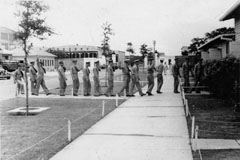 |
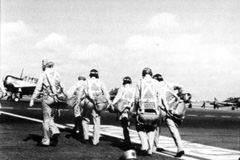 |
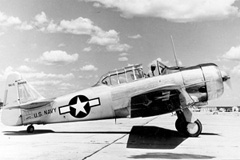 |
|
Cadets arriving at Pensacola ca. 1940 |
Cadets in flight gear June
1942 |
SNJ-5, Intermediate trainer ca. 1944 |
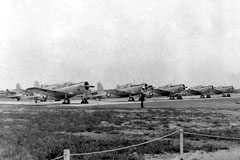 |
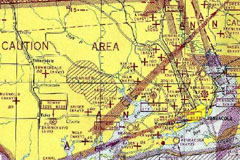 |
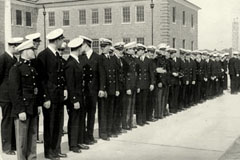 |
|
SNVs parked at Ellyson Field July, 15
1944 |
1945 sectional chart of NATC Pensacola |
Cadets stand in dress uniform ca. 1941 |
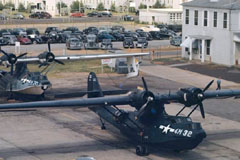 |
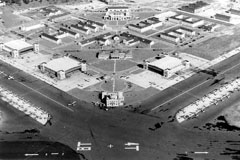 |
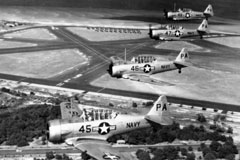 |
|
PBY5s at NAS Pensacola 1944 (in color) |
NAAS Ellyson VN-2 & SNVs on ramp 1943 |
Chevalier Field & formation of
SNJ-5
ca. 1950 |
|